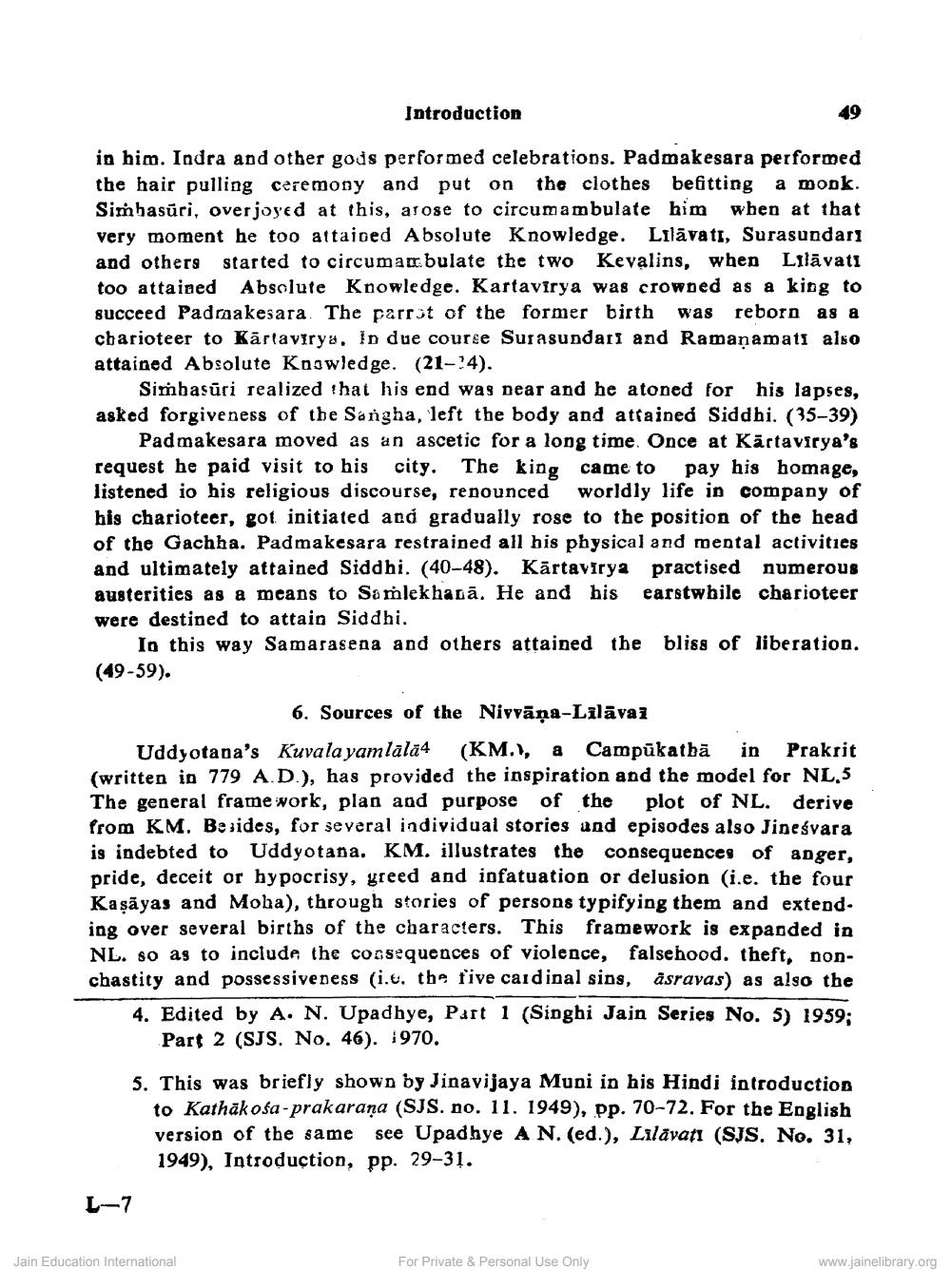________________
Introduction
in him. Indra and other gods performed celebrations. Padmakesara performed the hair pulling ceremony and put on the clothes befitting a monk. Simhasüri, overjoyed at this, arose to circumambulate him when at that very moment he too attained Absolute Knowledge. Lilavati, Surasundari and others started to circumambulate the two Kevalins, when Lilavati too attained Absolute Knowledge. Kartavirya was crowned as a king to succeed Padrakesara. The parrot of the former birth was reborn as a charioteer to Kartavtrys. In due course Surasundari and Ramanamat attained Absolute Knowledge. (21-24).
also
Simbasuri realized that his end was near and he atoned for his lapses, asked forgiveness of the Sangha, left the body and attained Siddhi. (35-39) Padmakesara moved as an ascetic for a long time. Once at Kārtavirya's request he paid visit to his city. The king came to pay his homage, listened io his religious discourse, renounced worldly life in company of his charioteer, got initiated and gradually rose to the position of the head of the Gachha. Padmakesara restrained all his physical and mental activities and ultimately attained Siddhi. (40-48). Kārtavirya practised numerous austerities as a means to Samlekhana. He and his earstwhile charioteer were destined to attain Siddhi.
In this way Samarasena and others attained the bliss of liberation. (49-59).
49
6. Sources of the Nivvana-Lilāvai
Uddyotana's Kuvalayamlala4 (KM.), a Campūkathā in Prakrit (written in 779 A.D.), has provided the inspiration and the model for NL,5 The general frame work, plan and purpose of the plot of NL. derive from KM. Besides, for several individual stories and episodes also Jinesvara is indebted to Uddyotana. KM. illustrates the consequences of anger, pride, deceit or hypocrisy, greed and infatuation or delusion (i.c. the four Kasayas and Moha), through stories of persons typifying them and extending over several births of the characters. This framework is expanded in NL. so as to include the consequences of violence, falsehood. theft, nonchastity and possessiveness (i.. the five cardinal sins, asravas) as also the
4. Edited by A. N. Upadhye, Part 1 (Singhi Jain Series No. 5) 1959; Part 2 (SJS. No. 46). 1970.
L-7
5. This was briefly shown by Jinavijaya Muni in his Hindi introduction to Kathakosa-prakaraṇa (SJS. no. 11. 1949), pp. 70-72. For the English version of the same see Upadhye A N. (ed.), Lilavatı (SJS. No. 31, 1949), Introduction, pp. 29-31.
Jain Education International
For Private & Personal Use Only
www.jainelibrary.org




